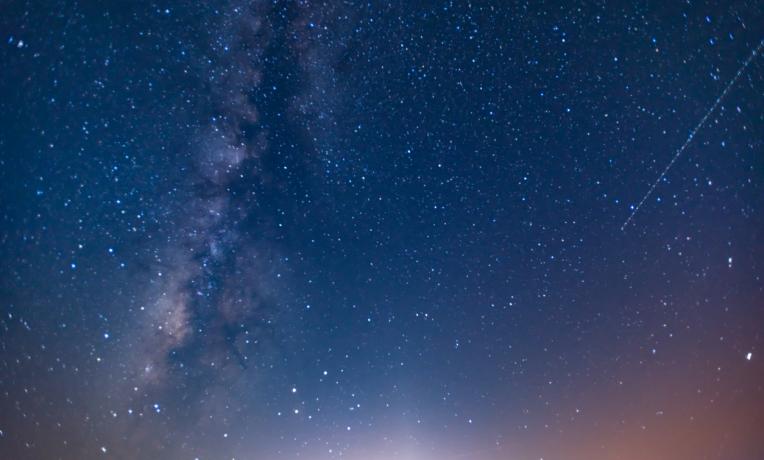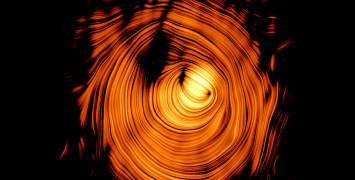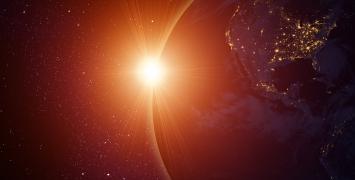Scientists recreate our dusty origins
We are all made of stardust! But what is cosmic dust and how is it made? An EU-funded project is recreating cosmic dust by simulating interstellar conditions in the laboratory and developing innovative processes that could lead to benefits for communication, transport and nanotechnology - boosting industry's competitiveness.

Cosmic dust was a key ingredient of the primitive solar nebula – the rotating, flattened disk of gas and dust from which the solar system originated. When the Sun was born out of the nebula, the dust condensed to form the Earth and the other rocky planets.
Astronomers know that tiny grains of cosmic dust are created in the atmospheres of red giant stars and blown into space. Grains are also made in the supernova explosions that mark the death of the most massive stars. From there, the dust collects in vast clouds which, over many millions of years, condense to make new stars and planets. But how do dust grains form and what chemical processes are at work?
The EU-funded NANOCOSMOS project has addressed these questions, and its findings could have practical applications for processes such as satellite communication and driverless vehicles. ‘Our knowledge of the intimate composition and structure of these nanograins is very limited mainly because we cannot collect them for detailed studies in the laboratory,’ says project manager Marcelo Castellanos of the Spanish National Research Council in Madrid. ‘Most of the information we have on them comes from their infrared spectra obtained with astronomical telescopes.’

Stardust machine
The research team’s goal is to study the formation and chemical evolution of cosmic dust grains in the laboratory. To do this, the project combines astronomical observations with computer modelling and, most importantly, sets out to make dust grains from scratch.
At the heart of the project is the 10 m-long Stardust machine, designed to mimic conditions in the outer atmospheres of red giant stars. In a series of five ultra-high-vacuum chambers, dust grains condense and are tracked on their simulated journey from the star into interstellar space.
This allows the team to fabricate high quantities of complex nanoparticles under controlled conditions and perform in-flight manipulation and in-situ characterisation.
Early results have shown that grains of carbon, a common component of cosmic dust, form more readily in the presence of hydrogen and acetylene molecules. Researchers are using an experimental set-up called AROMA to analyse the molecular composition of the grains and how they change under experimental conditions.
Another novel device, the gas evolution chamber, has been coupled to a 40 m radio telescope at Yebes, near Madrid. It will allow scientists, for the first time, to make radio observations of simulated astrophysical processes under controlled conditions.
Earthly applications
Although such research may seem remote from practical use, down-to-earth applications are already becoming apparent. In its commissioning runs, the Stardust machine has produced copper nanoparticles of well-controlled size that could be used in several fields of nanotechnology.
‘For instance, they could be suitable candidates for advanced catalytic materials or new sensors,’ Castellanos says. ‘Likewise, in the gas evolution chamber, we have addressed surface reaction processes that could interest other communities.’
He notes the similarity between the carbon-rich nanoparticles common in cosmic dust and the sooty pollutants generated in combustion processes. ‘The work we carry out on the formation of carbonaceous particles in astrophysical environments can provide guidelines to limit their production on Earth,’ he says.
Electronics developed in the project, such as integrated circuits for microwave frequencies, could also be used in satellite communication and sensors for autonomous road vehicles.

The six-year project, involving research centres in Spain and France, is led by three principal investigators – José Cernicharo and José A Martín-Gago at the Spanish National Research Council in Madrid and Christine Joblin at the National Center for Scientific Research in Toulouse.
Bios
Christine Joblin is a physicist, specialized in astrophysics and spectroscopy. She is a CNRS research director at Institut de Recherche en Astrophysique et Planétologie (IRAP, France). Her work contributes to a far-better understanding of large carbonaceous molecules in space by combining laboratory astrophysics frontier research and observations with space missions.
José Cernicharo is a physicist, specialized in molecular astrophysics and astrochemistry. He is a research professor at the Instituto de Física Fundamental (CSIC, Spain). His central research areas are the study of the interstellar medium and late type stars (i.e., physical conditions of molecular clouds, chemistry, spectroscopy).
José Ángel Martín-Gago is a physicist, specialized in vacuum physics and surface science. He is a research professor at the Instituto de Ciencia de Materiales de Madrid (CSIC, Spain). He is leader of the ESISNA group where the structure of nanometric-scale systems are studied by means of ultra-high vacuum equipment and surface science techniques.
This article was first published in the European Commission Research Information Centre.






